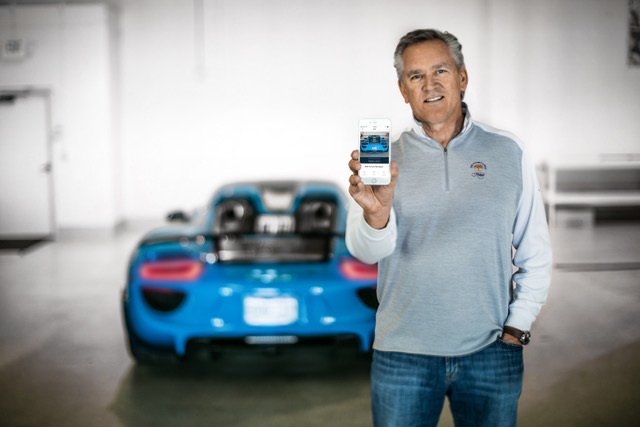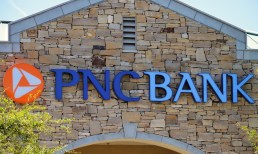Americans like owning and driving cars — 88 percent of those who are legally able to drive are owners of cars, according to Pew, giving the U.S. the world’s second-highest automobile ownership rate (Italy leads the pack and edges us out with 89 percent ownership).
But Americans do not like buying cars — or at least large sections of the car buying process. Roughly half would rather skip the “let me take it to my manager” routine, rating the overall experience unpleasant and unacceptable.
Next to the gamesmanship attached to settling on a price, consumers really dislike their experiences with auto financing — in particular, the amount of time for the process, which is roughly three hours on average, start to finish. Half of that time is spent filling out paperwork.
One of the people most acutely tuned into this pain is Rod Buscher, CEO and founder of Blinker, an online marketplace dedicated to connecting people who want to sell their cars to those looking to buy one.
Buscher spent most of his life selling used cars. Thirty years of his life were spent working in the good old-fashioned, brick-and-mortar world of car dealerships. In fact, he co-founded and ran a large chain of them in the greater Denver area for about nine years. His co-founder was John Elway, the founding quarterback (and now general manager) of the Denver Broncos.
At about the time that Elway returned to football as GM of the Broncos, Buscher started thinking about how to bring the process of buying and selling cars into the digital age. In mulling that over, he landed on one huge point of friction that got in the way of a positive used car buying experience: The “let me take it to my manager” game made the buyer feel trapped — worried that they were not getting a good deal, but unsure of whether there were any good deals to be had.
Advertisement: Scroll to Continue
“The idea behind Blinker when I started it was to give individuals who wanted to buy or sell a car the same kinds of abilities a dealership had in making a deal on a car,” said Buscher.
Fixing the Financing
Consumers who want to buy a car generally need to finance it — 80 percent of U.S. auto purchases are only possible with loans. Since private sellers can’t offer them and most buyers need them, this forces a lot of traffic to dealerships, who act as the middleman.
Blinker solves the problem by making financing an option in transactions between private buyers and sellers.
Sellers, once they’ve downloaded the app, can upload their vehicle’s image and price to Blinker. After some vetting, Blinker converts that price to a monthly payment and posts it to a variety of auto sales sites.
When the buyer finds the car, they snap and upload a picture of their driver’s license to the site and get pre-approved for credit, which takes about a minute. Once approved, they can reach out to the seller, arrange a meeting and take the vehicle for a test drive. If everything works out, the buyer makes an offer, the seller accepts it and the deal is submitted through Blinker, which sends the necessary documents back through DocuSign.
Once all paperwork is submitted, 100 percent of the purchase price goes directly into the seller’s account, and the buyer begins making their monthly payments to Blinker.
“We make money like the bank does — by charging interest on the loan, but we do so at much better economics for a lot of our customers,” Buscher explained, noting that in the firm’s early days, they carried all of the loans on their own balance sheet, as they were still proving in concept that they could safely and securely arrange auto financing deals over the internet.
But, as the platform has been successful — and is enjoying lower default rates than the average in the segment over the last few years — Blinker has also started selling loan packages to large institutions and credit unions.
“And then, like many auto dealers, we make money on service contracts, but we sell them for about 30 percent less than most dealers do — and on things like GAP insurance,” noted Buscher.
And despite the fact that there are a variety of steps along the way for Blinker to monetize, using the platform usually means a net savings for both buyers and sellers.
“Using Blinker, on average, sellers are getting $2,900 more than they would from a dealership,” he said. “Buyers, on the other hand, are saving around $2,000 — so this is real money.”
And, he noted, a real need — which is why Blinker is hoping to take its show on the road in 2018.
The Expansive Plan
Blinker started out in Colorado and Texas. As of this week, it added two more states to its roster — California and Florida — as well as an enhanced relationship with Ally Insurance, which will see Blinker selling their service contracts and insurance products, tracking toward what Buscher noted was “a bigger relationship down the road.”
They will also be increasing their focus on their refinance business, which, he noted, is about 50 percent of their business. Customers — particularly those who financed at less than favorable rates, often north of 10 percent, because of credit issues — often go on to pay flawlessly on those loans. Blinker, Buscher pointed out, can reward that good behavior and also save consumers a significant amount of money simply by dropping their interest rates into the single digits.
“We’re saving the average customer over $130 a month with refinancing,” he said.
Refinancing also offers Blinker the opportunity it is most acutely pursuing in 2018, which is expansion into all 50 states by year’s end.
“Refinance is easier for us to roll out because it is a single party transaction and it is very targeted and we know the customer we can help,” Buscher said. “So, we will very soon be rolling out in additional states with refinance. Buying and selling will follow that. That is a little more complicated, because we have to get licensed in every state when we are doing it organically by ourselves.”
To speed up that process, Blinker is currently in discussions with a series of larger banks and credit unions, which would allow them to transact on their lending licenses and move more quickly into markets.
Since getting up and running for the public in 2016, Buscher said the demand for Blinker’s services has been bigger than they could have imagined. When they first started, they assumed their client base would be millennials with troubled or limited credit, but they’ve found a much broader audience. They’ve seen leasing companies moving to put cars on their sites, as well as rental companies and auction houses that have traditionally served as dealer pipelines. The average buyer is in their 30s, not their 20s — and Buscher noted they’ve seen 75-year-olds buying and selling on the platform.
“We’ve financed scores from 540 FICO all the way up to the upper 700s,” he pointed out. “Our demographic pool is America — because, as it turns out, everyone wants a better deal on a car and an easier end-to end solution for buying one.”
Spoken like a true car salesman.




